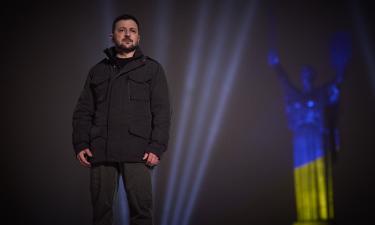16 years of Chernobyl catastrophe
The Chernobyl tragedy shook the world 16 years ago. As a result of the explosion of an energy bloc of the Chernobyl power plant, the radioactive "tail" stretched through Ukraine, Belarus, 14 regions of Russia and covered a part of West Europe. Tens of thousands of specialists constructed the huge "shell" over the destroyed energy bloc, many thousands of people were evacuated from the radiation zone. A total of 31 people (mostly firemen) were killed in the Chernobyl catastrophe. Later, 124 men were found sick with radiation disease in a hard form and 64 people - with leucosis. Still, some media keep writing about "hundreds of thousands" of injured. "This fiction was invented by ignorant people or journalists looking for a sensation," said in this connection Igor Osipyants, chief expert of the Institute for Safe Development of Nuclear Energetics attached to the Russian Academy of Sciences. "Our Institute is permanently engaged in studying the aftermaths of the Chernobyl catastrophe and I assert these allegations are unjust," he stressed. In his opinion, the state committed an error by starting to pay compensations for the radiological damage caused by the power plant to people's health. "Basically the relocatees' property, not health, was damaged, and this damage was repaid," he specified. According to him, the relocatees have been under a heavy psychological pressure over these years, expecting "hard consequences". "These negative emotions did not add them health," he emphasised. At the same time, Osipyants admitted that the thyroid cancer rate among children and adolescents is higher in the Chernobyl catastrophe area than in other regions of the former USSR. "Among the 14 Russian regions covered by the wing of Chernobyl's emissions, the highest radioactivity level is in the Bryansk Region," Osipyants said. "But people live in a number of villages of the region and are not sick, though the radiation dose there exceeds the Russian norm by several times. But what is the norm? For instance, the natural emission in Finland is twice as large as in the "radiation contaminated" villages of the Bryansk Region. People live a quiet life in Finland too and do not consider themselves inhabitants of a risky zone," Osipyants noted. At the same time, experts at the Institute for Safe Development of Nuclear Energetics believe that the issues of survival in the contaminated area require additional studying. For instance, the Ukrainian peasant Maria Shara living in the alienation zone has celebrated her 124th birthday.
Subscribe to Pravda.Ru Telegram channel, Facebook, RSS!





